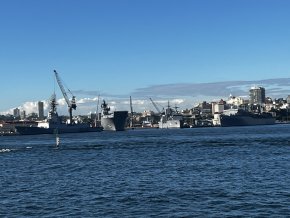This would only be possible through changes that have (apparently) already been made but yet to be disclosed.Apologies if this has been previously covered but a recent senate inquiry stated that the top speed of type 26 would not be known until speed trials of the ship when launched later this year the suggestion was the Hunter class would then be able to match such a speed, my query is why a heavier ship with same power and propulsion would match that of a lighter one by up to three thousand long tons
If the main concern is top speed and through-life power margins, a second MT-30 is a potential solution. I'm not sure what else could be done without reducing capability, speed and power margins.


